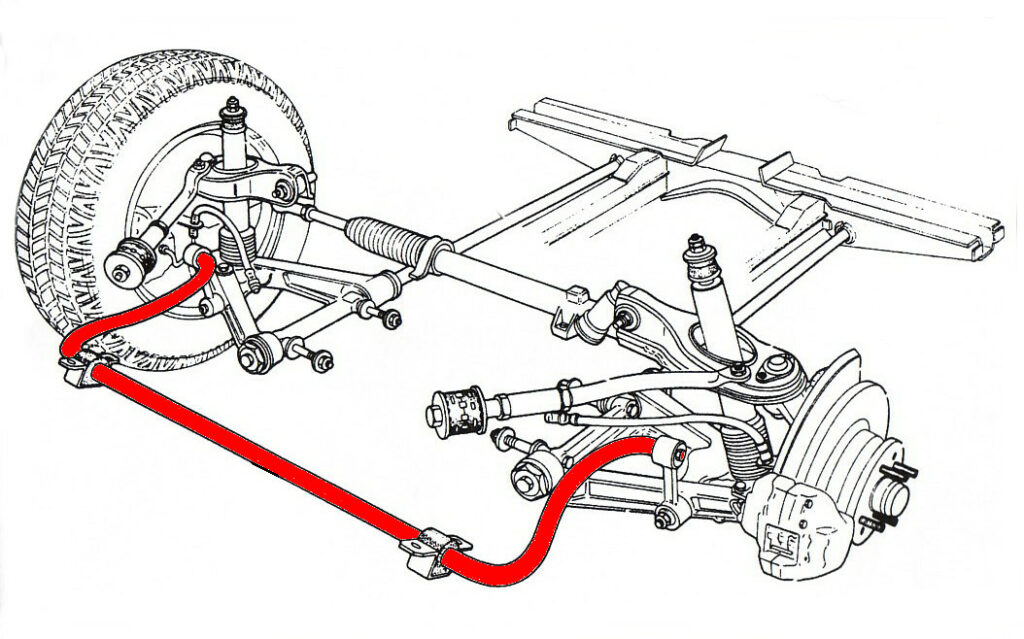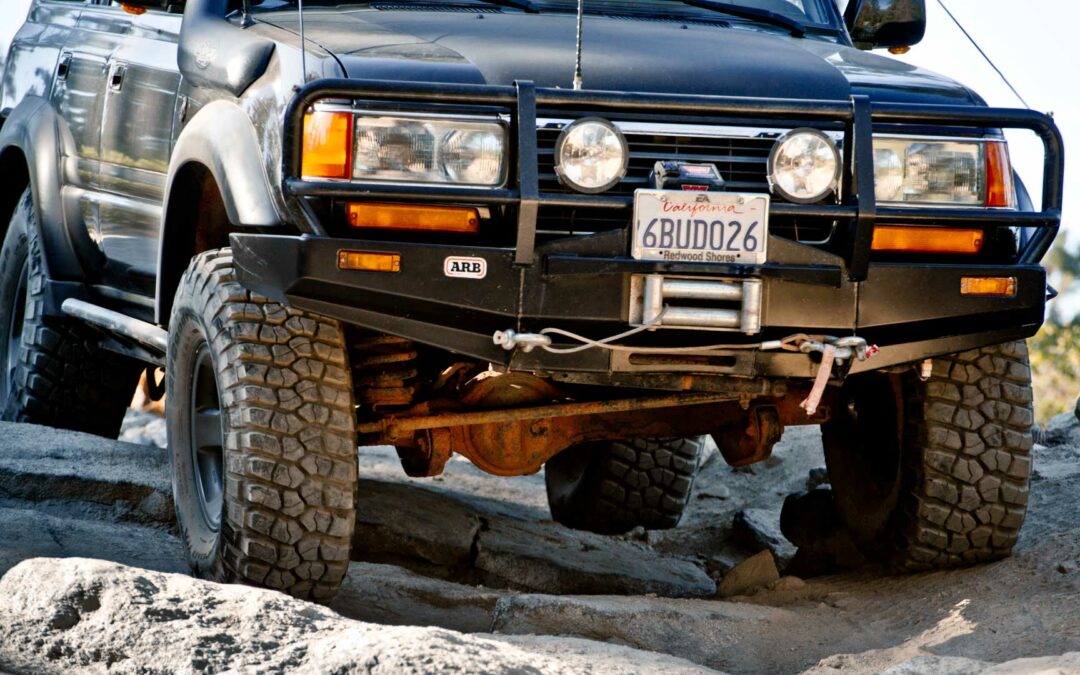Should I disconnect my sway bar and why would I need to in the first place? If you are a seasoned off-road driver, you already understand how sway bars works. But those newer to off-road pursuits might not be as familiar. Don’t worry. We’ll bring you up to speed.
Welcome to Great Question! – A series of articles that focus on basic questions new drivers might have while preparing to venture down the road less traveled.
What is a sway bar?
Sway bars, stabilizer bars, anti-sway bars, anti-roll bars and torsion bars all refer to the same part. They are a fundamental component of the suspension system that helps keep the vehicle’s center of gravity in a safe zone to avoid excessive body lean. The balance provided by sway bars contributes to keeping you safe when cornering, driving up/down a hill or driving over trail obstacles.

Where are sway bars located?
Modern vehicles use a U-shaped steel stabilizer bar that connects the front suspension to the frame and another similar torsion bar that does the same with the rear suspension.
What is the purpose of a sway bar?
In simple terms, the purpose of a sway bar is to prevent a vehicle from rolling over. To achieve this goal, sway bars limit the movement of each wheel and its suspension components to reduce the leaning that could roll over your vehicle during curves or uneven trails.
Keep the phrase “sway bars limit the movement” in mind, as we will return to this shortly.
Which cars have sway bars?
All modern vehicles have front and rear sway bars. However, many vehicles before 2000 only had a front sway bar, and even further back, many vehicles did not have a stabilizer bar. That might make you wonder how necessary sway bars are, which we’ll cover next.
Can you drive without a sway bar?
Well, technically, yes, you can drive without sway bars. But if you think about it, the same could be said for seat belts, airbags and even bumpers. As time passes, manufacturers improve vehicle safety by incorporating new components. Sway bars are one of them.
That said, the real question to ask yourself is, under what conditions should you consider disconnecting your sway bars?

Why would you disconnect sway bars?
Thanks to sway bars, off-road vehicles offer reasonable cornering stability and even safety during mild off-road activities. But what about driving on more extreme trails? Do you really need a sway bar in such cases?
If you disconnect the stabilizer bar from your SUV or truck, you COULD benefit from a greater range of suspension travel. That kind of trail fix is definitely handy if you’re rock crawling at slow speeds. However, you pay a high price as you forgo the suspension’s only body roll control mechanism.
Furthermore, the gain in suspension travel varies widely from vehicle to vehicle. If you add to this that many Overlanding-ready vehicles have fridges, extra batteries, modified bumpers, and additional equipment, then the issue becomes more complex as the center of gravity is no longer the same as the factory vehicle.
For this reason, if you like to enjoy extreme trails, our recommendation is to replace your factory sway bars with aftermarket parts designed for this purpose. That is adjustable sway bars that can be connected and disconnected as needed. However, keep in mind that the latter is only recommended for expert off-road drivers who have additional protective equipment and know exactly what they are doing.
Again, disconnecting the anti-roll bar is not a universal solution as it only provides real benefits to certain vehicles under specific road conditions. For the vast majority of Overlanding enthusiasts, a quality sway bar that is thicker than the original will be more than enough to handle lateral movement while driving through challenging trails.
Why do stabilizer bars matter for Overlanding?
For most, Overlanding is about connecting with nature by taking the road less traveled. In that sense, it is essential to be self-reliant and take care of safety at all times. In some situations, sway bars limit your ability to overcome obstacles, so if you choose to disconnect them, proceed with caution. And remember to reconnect them once the road runs smooth again.
More of a visual learner? Here are some great videos that break them down even more.
The purpose of the Great Question! Series is to always be learning. Everyone starts somewhere, and there are no dumb questions when it comes to overland vehicles. Shoot a message to us if you have a topic you’d like us to review in depth! For those wanting more, check out our write up on vehicle considerations before taking your truck on an overlanding adventure.
Safe travels out there!

